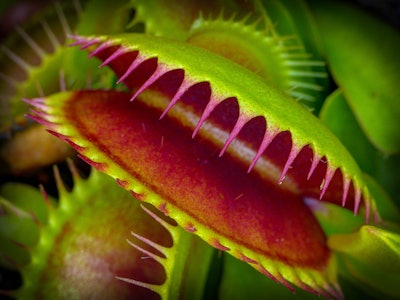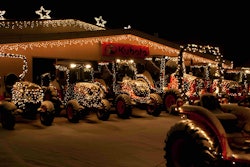 Photo: Mark Freeth/Flickr
Photo: Mark Freeth/FlickrCarnivorous plants are generally thought to reside in exotic tropical areas, but the Venus flytrap is native to North Carolina and the frequent victim of poaching.
This well-known example of a meat-eating plant has a limited habitat in the wild, a 75-mile radius around Wilmington. It has fascinated many for years and with that fascination comes a group of people looking to profit from it.
Poachers have been uprooting these plants for decades to sell them on the black market. Oddly, considering the risks, it isn’t a particularly lucrative business. Most of the plants are sold for about 25 cents.
“What makes poaching so sad and stupid is that the people doing it are local folks,” Debbie Crane, director of communications for The Nature Conservancy’s North Carolina chapter, told Scientific American. “They’re not making much money off of it. They’re selling the bulbs for maybe 25 cents. It’s an incredibly stupid thing that they’re going to wipe out this wonderful thing in nature.”
Previously the theft of thousands of these plants was only considered a misdemeanor, with a maximum fine of $50.
“People would get a slap on the hand in court, and they didn’t care,” Crane said. “They came out of court grinning.”
In December 2014, the state stiffened the punishment for poachers by changing the theft of Venus flytraps to a felony. Offenders can now face up to 29 months in prison. In fact, four men made headlines in January 2015 after being caught with 970 stolen flytraps, or about 3 percent of the entire wild population.
One man was convicted and sentenced to six to 17 months in jail. The other three pleaded guilty and were sentenced to supervised probation, two for 24 months and one for 12 months.
What is bizarre is the fact that the stolen flytraps aren’t needed in the market because they grow so well in captivity.
“Flytraps love cloning,” Crane said. “You can create them in a greenhouse very easily, and it’s being done all over the world. They’re being sold legally in a lot of places because they’re cloned.”
It is too soon to tell whether the new law has curbed theft, but poaching isn’t the only threat Venus flytraps face. Their native region has been shrinking over time due to development and the lack of fires.
When purging fires occur in the coastal Carolina area, they kill off competing plants, providing the flytraps with the sunlight they desperately need. Because of their precarious situation, University of Wisconsin scientists are spearheading an emergency petition to have the plant added to the endangered species list.
“[The flytrap] is as American as the bald eagle,” Don Waller, UW botany and environmental studies professor, told The Badger Herald. “It’s from our own backyard. Why aren’t we protecting it?”
The U.S. Fish and Wildlife Service has until Jan. 19, 2017, to decide whether the plant should be added to the list and another 12 months to 10 years before it is actually added to the list.
“We have a lot of faith in the government, but things are really slow,” Waller said. “Flytraps will be even more decimated in numbers if we have to wait 10 to 20 years.”









